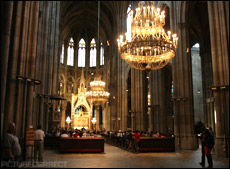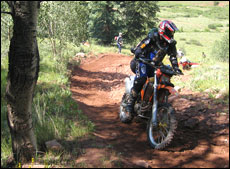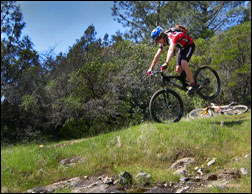 Exposure is one of the most important photography concepts to learn, but it is also one which strikes fear into the hearts of even the most intrepid photographer – after all, it all sounds so… technical! As it turns out, exposure is actually a very simple thing to grasp and, once you do, it allows you so much more control over your photos that you’ll wonder how you ever lived without it.
Exposure is one of the most important photography concepts to learn, but it is also one which strikes fear into the hearts of even the most intrepid photographer – after all, it all sounds so… technical! As it turns out, exposure is actually a very simple thing to grasp and, once you do, it allows you so much more control over your photos that you’ll wonder how you ever lived without it.
Exposure
Exposure is simply the amount of light that reaches our camera’s sensor or film. Like Goldie Locks and her porridge, we’re looking to capture just the right amount of light to show off all the details of our scene. Too much light and we end up with an overexposed photo; too little and it comes out dark and underexposed.
So how do we control exposure? By using two basic camera properties – the shutter speed and the lens aperture diameter.
 Shutter Speed
Shutter Speed
Shutter speed is a measure of how long the camera’s shutter is open for. A fast shutter speed might be around 1/1000th of a second, while a slow shutter speed can be up to several seconds or longer. Plus of course you can have anything in between.The longer the shutter is open for, the slower the shutter speed, and the more light we capture.
Aperture Diameter
This is perhaps the most daunting camera setting, but it’s actually very simple. The aperture is an opening within the camera’s lens that can get wider or narrower. A wide aperture allows more light through in a given amount of time than a narrow one.
Aperture is measured by an ‘f-number’. Somewhat confusingly, a small f-number (e.g. f2.0) means we have a wide aperture, which will let in more light. A large f-number (say f32) means we have a narrow aperture, letting in less light.
Combining Shutter Speed and Aperture Diameter for a Perfect Exposure
By now you can probably see that there are many combinations of shutter speed and aperture diameter that will give us our desired exposure. For example we could use a fast shutter speed and a wide aperture, or a slower shutter speed and a narrow aperture, and still let in the same amount of light, giving us the same exposure.
 The exact settings you use depend on the situation and the effect you want to achieve.
The exact settings you use depend on the situation and the effect you want to achieve.
If you are photographing a fast-moving object like a car, then you’ll need to use a fast shutter speed to prevent it coming out blurred. For this you’ll need a wide aperture to let in enough light in the short space of time the shutter is open for.
If on the other hand you want to maximize your scene’s depth of field, you’ll need to use a narrow aperture, which will necessitate a slower shutter speed.
The key to finding the best shutter speed and aperture diameter settings for your scene is to experiment with several different combinations. Each will give your scene a unique ‘feel’, and you’d be surprised at the amount of times the ‘wrong’ settings will produce the best photo.
About the Author
Pete Williams is fanatical about photography. His website http://www.amateursnapper.com contains tons of tips, ticks and tutorials to help you get the most out of your photography.
Like This Article?
Don't Miss The Next One!
Join over 100,000 photographers of all experience levels who receive our free photography tips and articles to stay current:






The article is good and explains the basics in a simple style.I want to know two things
1> What setting should I have to capture a flight of birds in low light conditions(misty morning or twilight).High shutter speed (1000) but then the result will be darkerand the indicator sensor shows
-(minus) in red.
2> When I am focussing on a object (say a Tiger) the inner focussing ring is too small for the whole object.So when I focus and aim at the head will the rest of the body (outside the ring )be hazy /out of focus?
Thanks